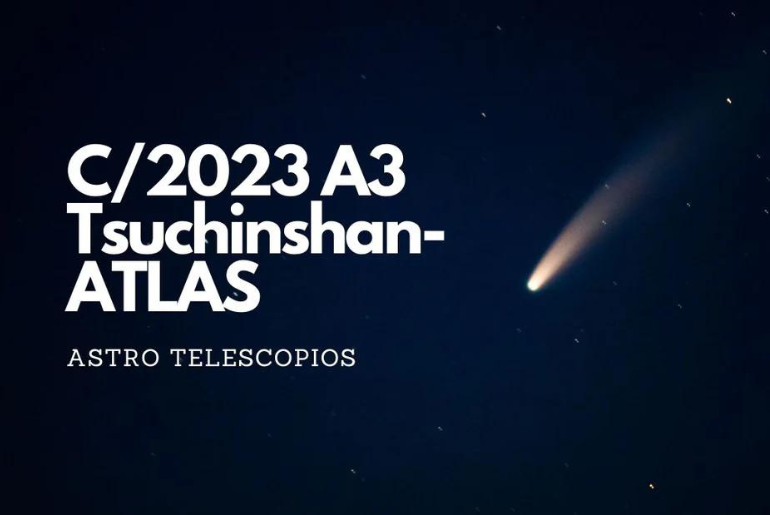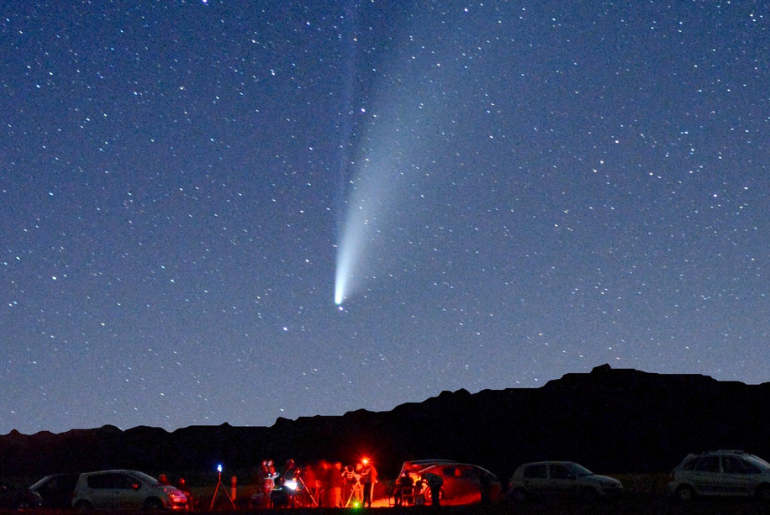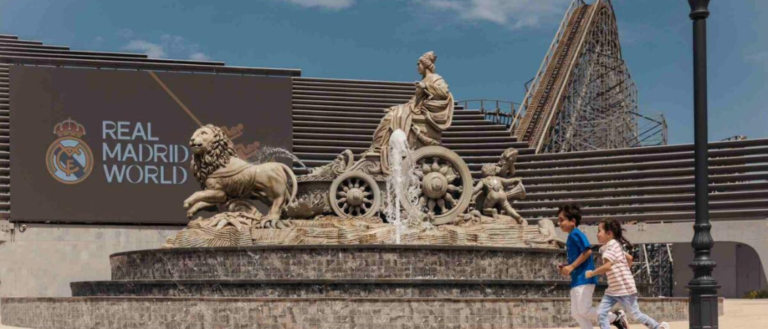For a comet that only appears once every 30,000 years, calling it ‘ultra rare’ doesn’t sound drastic enough. If you don’t understand the value of how rare this comet is, look at it like this – if you miss out on witnessing Comet C/2023 A3 in October, the next time anyone will get to see the same comet again will be your kids…1072 generations from now! Yes, I did the math just for you. Hopefully, that wasn’t enough to convey to you that this is one celestial event you can’t miss out on. But if not, then come with me, and I’ll tell you all the interstellar details you need to know about Comet C/2023 A3.
Also read: UAE Will Get To See A Lunar Eclipse & A Rare Comet This September
Why You Can’t Miss It
The comet C/2023 A3, also called Tsuchinshan-ATLAS, is expected to be exceptionally bright, with a fast-moving and dramatic long tail. It is predicted that we may be able to witness this comet on Saturday, October 19th. This event promises to be one of the most exciting astronomical phenomena of the century! Experts are even calling it the “comet of the century” because of its brightness and visibility.

Also read: We Found A Hidden Island Just 1.5 Hours From Dubai – Here’s What It Looks Like
What Makes This Comet So Special?
Comets are essentially frozen balls of gas, rock, and dust, and what makes C/2023 A3 so fascinating is its incredibly long orbital period – it takes 80,000 years to complete one orbit around the sun! This means the last time it passed Earth, civilization as we know it didn’t even exist.
Will It Be Visible With The Naked Eye?
The good news is that the comet is already in “fine health,” according to recent reports from the southern hemisphere. However, there’s a small provision – while it’s predicted to be super bright and possibly visible to the naked eye, it’s not guaranteed. Nature can be unpredictable, but the odds are looking promising!
Also read: 25 Fun Things To Do This October In Dubai – Concerts, Music Festivals, Sports Events & More
Where & How to Watch It
NASA recommends heading out to areas with minimal light pollution for the best viewing experience. So, if you want to catch this celestial wonder in all its glory, the deserts around Dubai or Abu Dhabi are your best bet. Urban city lights can wash out fainter stars, so staying away from the bright city skyline is crucial for a clear view of the comet.

This celestial event isn’t just for hardcore stargazers and astrophiles; it’s an opportunity to experience something that will never return in your lifetime or the next. It’s a memory to cherish and pass down through generations until, of course, your 1072nd generation is able to see it for themselves.
You may also like: The Darkest Spot To Go Stargazing In UAE – The ‘Milky Way Spot’














